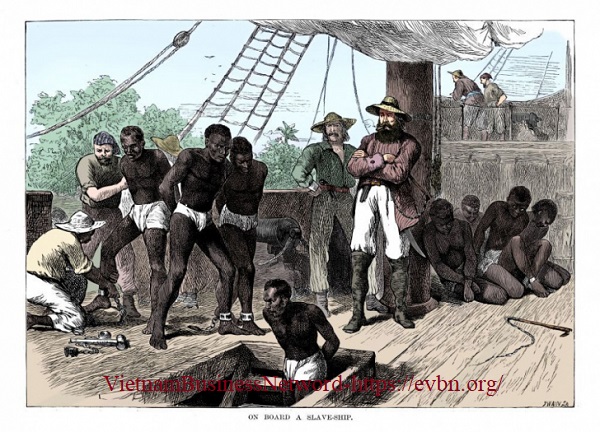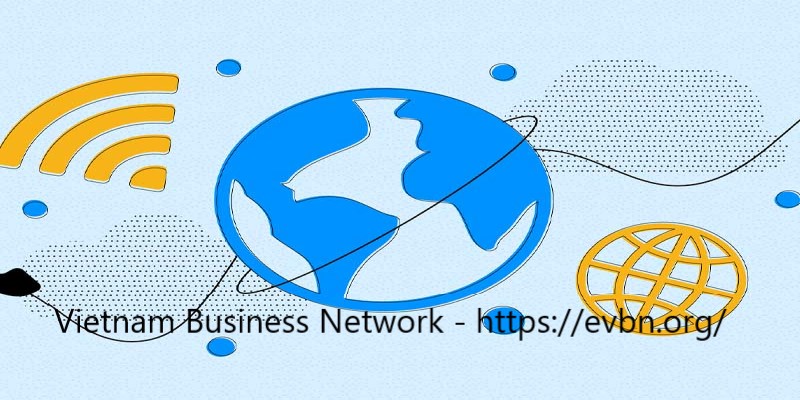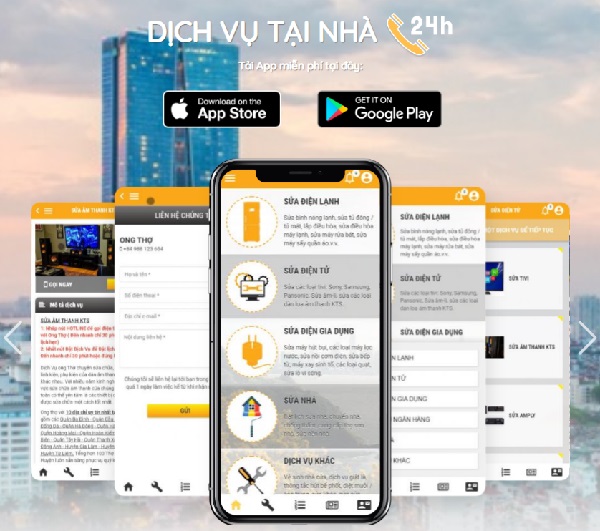How to Have an Honest Conversation About Your Business Strategy
Senior teams that have engaged in this process have made dramatic changes in how their businesses are organized and managed—and in their bottom-line results. Success that begins with honest conversations begets future conversations that further improve performance.
Beer and Eisenstat present the methodology they’ve developed for getting the truth about an organization’s problems (and the truth is always embedded within the organization) onto the table in a way that allows senior management to do something useful with it. By assembling a task force of the most effective managers to collect data about strategic and organizational problems, the senior team sends a clear message that it is serious about uncovering the truth. Task force members present their findings to the senior team in the form of a discussion. This conversation needs to move back and forth between advocacy and inquiry; it has to be about the issues that matter most; it has to be collective and public; it has to allow employees to be honest without risking their jobs; and it has to be structured. This direct feedback from a handful of their best people moves senior teams to make changes they otherwise might not have.
Too many organizations descend into underperformance because they can’t confront the painful gap between their strategy and the reality of their capabilities, their behaviors, and their markets. That’s because senior managers don’t know how to engage in truthful conversations about the problems that threaten the business—and because lower-level managers are afraid to speak up. These factors lie behind many failures to implement strategy. Indeed, the dynamics in almost any organization are such that it’s extremely difficult for senior people to hear the unfiltered truth from managers lower down.
Mục Lục
The Idea in Brief
Your strategy is sound but you can’t get it off the ground. The likely cause? People in your organization are afraid to talk frankly and publicly about obstacles to change. But to execute your strategy, you need the unvarnished truth: Does your organization have the right culture, structure, and leadership to support your strategy? Who might be threatened by proposed changes? Seeking straightforward answers to questions like these will set the stage for successful strategy implementation.
You can orchestrate strategic conversations about organizational weaknesses through a structured, highly visible assessment process. First, convince employees that you really want the unvarnished truth. Next, deploy a task force of your most respected managers to gather the brutal facts from key players throughout the company. Your goal? To find out what managers and employees really think of the strategy—and what could block its implementation. Then, carefully distill feedback to identify critical issues affecting your strategy. And most important, translate strategic insights into decisive action. When you act on critical feedback, you underscore its importance to the success of your organization.
Organizations that systematically encourage truth-telling reap dramatic rewards. For example, after one Hewlett-Packard division began conducting yearly strategic conversations, it saw a ninefold increase in profitability over a seven-year period.
The Idea in Practice
Structure Your Strategic Conversation
Articulate a Coherent Strategy
Your organization performs best when strategy is unambiguous. Ask your senior management team to prepare individual answers to essential questions about strategy—including “What are our company’s objectives and aspirations? What are the market threats and opportunities? What unique value do we offer our customers?” Gather team managers to discuss their answers and draft a statement about strategy.
Solicit Honest Feedback
Use a task force of highly regarded managers to ask a simple question of key employees: “What are the strengths we should build on and the barriers we should remove in implementing this strategy?” To counter “shoot the messenger” fears, promise employees that their feedback will be confidential.
Listen
Ask your task force to present feedback themes in a round table discussion—then listen carefully without interruption or debate. Hearing live feedback in a disciplined format has far greater impact than viewing PowerPoint slides or reading a standard report. When you listen intently to perceptions that may differ from your own, you open the door to fresh strategic insights.
Incorporate Input
Once your task force has presented its feedback, meet as a management team to distill core strengths and weaknesses in organizational structure, culture, and capabilities. Decide how to leverage strengths and correct organizational weaknesses. Then develop a proposal for action.
Reality Test
Ask your task force to review your implementation plan. This step ensures the quality of your change plan and underscores your commitment to the value of their honest feedback. One company’s task force told its senior management team that they had ignored the need to streamline a top-heavy division, a move that would reduce the power of one of the senior managers. The CEO and his top team validated the credibility of the feedback process when they revised their plan accordingly.
Act
Honest dialogue pays off when you act on what you’ve heard. And when you engage in annual strategic conversations—using a structured process that employees trust—you create a self-reinforcing culture of honesty that will increase the likelihood of future strategic success.
Despite widespread rhetoric about the need for organizational agility, an astonishing number of businesses stay stuck in neutral when they need to implement a new strategy.
Consider the situation that Lynne Camp faced in July 2000. Camp, the vice president and general manager of Agilent Technologies’ Systems Generation and Delivery Unit (SGDU), was charged with creating a single global company from a set of fragmented businesses in Asia, Europe, and the United States. To gain control over product decisions being made by the regional teams she had inherited, Camp and her senior team had originally adopted a functional organization structure. This enabled them to exit many marginal, local businesses and focus on the opportunities that were most promising from a global perspective. It also allowed them to introduce more efficient shared processes.
Despite these strengths of the new structure, problems began to emerge. The functional departments didn’t give the new businesses the attention they needed. The staffs of the regional field organizations were in a funk; they thought their customer perspective was being overlooked. Conflict between the functions, the businesses, and the field organizations was growing. The senior team was slow to make decisions, and no one took responsibility for the performance of the developing businesses.
Camp surveyed the problems and concluded that the best way to increase accountability and speed up decision making—and thus to support the strategy of focusing on a few promising businesses—was to switch to a matrix structure. Members of the senior team strongly disagreed. A matrix would not work, they thought, and besides, they were too overloaded to undertake another major reorganization. Camp could have imposed her solution unilaterally, but she knew that if she did, she’d undermine the senior team’s commitment, which was critical to making this complex global structure work. She needed to find a different way out of the impasse.
As Camp searched for an approach that would jump-start change at SGDU, she began to suspect (correctly) that people throughout the unit were talking about its strategy—and she further suspected that plenty of managers a couple of layers down had insights that she needed to hear. But these conversations took place behind closed doors, for the most part. And private conversations, by their nature, can’t mobilize an organization to address the gaps between its business strategy and the structure, capabilities, and market realities it faces.
In our experience, the challenge Lynne Camp faced—SGDU’s collective inability to talk openly about its problems—is common. This lack of openness lies behind many failures to implement strategy. We’ve become convinced that the most powerful way for leaders to realign their organization is to publicly confront the unvarnished truth about the barriers blocking strategy implementation. Typically, this involves looking closely at the roles and decision rights of various parts of the business, as well as changing the behavior of people at all levels. Public, organizationwide conversations about such fundamental issues are difficult and likely to be painful. But pain contributes to a species’ survival by triggering learning and adaptation; it can have the same effect on organizations. Businesses and the people inside them don’t learn to change unless they have the courage to confront difficult truths.
Because most initiatives fail to uncover the truth, they lead to only superficial change. Employee surveys, 360-degree feedback, interviews by external consultants, and even relatively honest one-to-one conversations between a key manager and the CEO (remember the courageous discussion Sherron Watkins had with Kenneth Lay at Enron) typically do not move the organization forward. They do not convince employees that management wants to know the truth and is ready to act. Quite the reverse—all too often, these methods lead to cynicism, and cynicism is the enemy of commitment to change. In one highly regarded company we studied, a task force of respected managers rebelled when asked by senior management to conduct and analyze a worldwide employee survey. They refused to get involved in yet another hopeless exercise. Meanwhile, senior managers fully believed that they had acted on past feedback.
We believe that organizationwide conversations are essential, so about 15 years ago we launched a research program to develop a process that leaders could use to engage their people in an honest conversation. The “strategic fitness process” was designed in partnership with senior executives to enhance their capacity to implement strategy quickly and effectively. It does so by fitting the organization to the strategy and increasing fitness, the capacity of the organization to learn and change. Since then, this process has been used in more than 150 businesses in the retail, hospitality, high technology, banking, and pharmaceutical industries.
Crafting a Conversation that Matters
After more than a decade of implementing the process and researching its consequences, we have identified several overriding lessons that we believe are relevant in any organizationwide conversation, whether or not leaders use our particular process. To wit:
A conversation about strategy needs to move back and forth between advocacy and inquiry.
Most failures in organizations start when top management advocates a new direction and begins to develop programs for change without finding out what influential people in other parts of the organization think of the new focus. They thereby set themselves up to be blindsided by concerns that emerge much later. A smaller number of well-intentioned top managers make the opposite mistake. They do not advocate at all. Instead, in the name of participation and involvement, they depend entirely on inquiry—assembling a large group of managers and asking them to define a direction. The result is often widespread frustration. Managers and employees look to leaders to articulate a point of view about where the business is going, a point of view to which they can respond. Leaders need to advocate, then inquire, and repeat as needed.
The conversation has to be about the issues that matter most.
To energize the organization, the conversation must be focused on the most important issues facing the organization—the company’s strengths and the obstacles to performance. It’s all too easy for senior managers to become swamped in the operational details of managing a business. What gets crowded out are tough and honest conversations about the fundamental issues that will determine long-term success. Do we have a distinctive business strategy that key managers believe in? Do we have the capabilities to execute that strategy? Is our leadership effective?
The conversation has to be collective and public.
Successfully realigning an organization with a new strategic direction almost always requires simultaneously changing the worldview and the behaviors of a whole set of interdependent players—the CEO, the senior leadership team, and managers down the line. This won’t happen without a collective, public conversation. By “collective” we mean that several levels of management across important functions and value-chain activities have to be engaged. By “public” we mean that senior managers need to keep everyone three to four levels below them informed about what has been learned, as well as what changes are planned.
The conversation has to allow employees to be honest without risking their jobs.
In most of the companies we’ve studied, managers talked about strategic problems with one or two people they trusted but pulled their punches in more public settings. In Agilent’s SGDU division, for example, everyone knew about the tensions between the regional entities and the functional departments. Everyone was aware that the senior team wasn’t managing effectively, and many managers doubted Camp’s ability to lead the organization out of the morass. But none of these issues was discussed publicly, for two reasons. First, managers feared that being honest would hurt their careers or even endanger their jobs. Second, they were afraid that Camp and her senior team would feel so hurt and defensive that the conversation would not lead to change and might even set back the organization.
The conversation has to be structured.
When people hear “honest,” they tend to think “spontaneous.” But public conversations in organizations are rarely spontaneous, as Lou Gerstner found out when he took charge at IBM in 1993, because the stakes are so high. Gerstner describes a strategic meeting at which managers sat at a large conference table with scores of assistants behind them, all listening to a PowerPoint presentation and engaging in little or no discussion. He was so frustrated by the lack of real dialogue that he turned off the overhead projector, with what he calls “the click heard around the world.” Gerstner learned, as we have in our work, that the “free-for-all of problem solving” so essential for high performance “does not work so easily in a large, hierarchically based organization.” Paradoxically, to achieve honesty and full engagement in these organizations, you need to structure the conversation carefully.1
When people hear “honest,” they tend to think “spontaneous.” But public conversations in organizations are rarely spontaneous.
Driving Change, One Step at a Time
In the pages that follow, we’ll outline the process we’ve developed to support productive, organizationwide conversations about barriers to performance (summarized in the exhibit “The Strategic Fitness Process”). We’ll focus on important points to remember as this conversation unfolds. These points—and the principles underlying them—hold true in any setting where top management truly wants strategic change.

The Strategic Fitness Process
Start the conversation with the leadership team.
Businesses are designed with a built-in directional gyroscope—the senior team. These individuals oversee the parts of the organization that need to work together to implement business strategy. Yet our consistent finding in many companies is that these built-in gyroscopes are broken. The senior management teams are not doing the fundamental work that their organizations expect of them—setting direction, resolving conflicting views about priorities, and creating the context and culture that will enable the firm to deliver results. In an extraordinary number of companies, unclear strategy and conflicting priorities obstruct performance. The cause, as perceived by people at lower levels as well as by members of the senior team, is an ineffective senior team. When these teams meet they tend to review results, focus on specific problems, or discuss administrative matters. They do not dig into or resolve fundamental strategic issues. All of this was true at SGDU. During senior team meetings people tended to interrupt one another, ignore one another’s comments, and engage in a lot of side conversations. As a result, the group had difficulty achieving consensus and making timely decisions, particularly about the politically charged issues of strategy and organization design.
The responsibility for building an aligned organization cannot be delegated. The senior managers must work together to define the business strategy as well as the capabilities and values essential for long-term success.
We start the strategic fitness process with a one-day meeting. The senior management team develops the strategy and drafts a statement about organizational direction that will later be used as the basis of the inquiry into the organization’s strategic alignment. To promote an honest dialogue that uncovers differences among members of the senior management team, we ask each member to prepare individual answers to six simple but profoundly important questions:
- What are the company’s objectives and aspirations?
- What are the market threats and opportunities?
- What is the value proposition you are delivering?
- What are the most critical things the business must do to deliver on the value proposition and create or sustain competitive advantage?
- Which organizational capabilities are needed to implement the strategy?
- Which values should guide the organization?
At SGDU, the senior team’s answers to these questions and their efforts to create a direction statement revealed to them that they were trying to straddle two very different strategies. The first was a reactive strategy—grow sales quickly by responding to immediate customer needs using existing technology. The second was a proactive, R&D-driven strategy of building distinctive, technology-based solutions platforms that competitors could not easily replicate. In creating the statement of direction, the senior team for the first time clearly committed itself to a technology-based platform strategy.
Draft your best managers to collect data and engage the organization in a conversation.
The two conventional approaches to collecting data about strategic and organizational problems are to survey thousands of employees anonymously or to ask outsiders (consultants or HR specialists) to conduct interviews. The assumption is that only anonymous surveys and outsiders can elicit objective, truthful information. The problem is that out of a desire for objective data, the senior team is distancing itself from the people who have seen and experienced problems. That distance makes it possible for executives to underestimate or even deny problems and to delay action. In many companies we have studied, the senior team had massive amounts of survey data but had taken little action as a result of anything it had learned.
When a senior team appoints a task force of up to eight of its best managers to interview pivotal people in all parts of the organization, the team sends a clear message that it is serious about uncovering the truth and making changes. To ensure that the task force is seen as representing the interests of the entire organization, the senior team collectively selects its members. If anyone on the senior team expresses a concern about a proposed individual, that individual’s name is stricken from the list.
Lynne Camp and her senior team, like many other senior teams, hesitated to appoint their best managers because these were also the busiest managers. We have learned the hard way, however, that if you do not appoint your most effective managers, the task force’s feedback will have less credibility with the senior team and with the larger organization. It becomes all too easy for the senior team to discount or explain away painful truths.
Even if a credible task force is appointed, skepticism in the larger organization is likely to linger. Managers are apt to remember previous information-collecting efforts that yielded few tangible results. The firm can allay this skepticism by having the task force, rather than the senior team, select the 100 or so people who are to be interviewed. This helps to assure the organization that the task force members—not senior management—control this piece of the process. The interviewees should be a representative sample of people, including managers, from the areas most responsible for implementing the strategy. The number of interviews can almost always be kept to 100 or less, regardless of whether the strategy being assessed is for a worldwide Fortune 50 corporation or a small start-up. Data collection focuses on company strengths and barriers to the implementation of strategy, not employee satisfaction and morale. Thus, the interviews can be limited to those in pivotal roles along the value chain.
Readers may wonder whether a task force handpicked by top management will confront the senior team with the truth. The answer, emphatically, is yes. Provided that certain safeguards are in place (we will describe these in a moment) and that task force members believe the leadership team is prepared to make changes, the task force quickly becomes a cohesive group, even when it is made up of people from warring factions of the organization. Moreover, task force members come to feel a deep obligation to those they have interviewed. Many see the assignment as a once-in-a-lifetime opportunity to make things better—and they don’t shy away from confronting the brutal facts. As one task force member at SGDU put it, “People had spilled their guts to me in the interviews, and I owed it to them to really see this through.”
To uncover the truth, protect the people in the conversation.
In most organizations, lower-level managers are afraid to talk openly about problems that may be blocking effectiveness and performance. We’ve found that several approaches help to mitigate that fear.
First, and most important, the confidentiality of interviews must be safeguarded. Task force members report back general themes that come up in multiple conversations, not comments that can be attributed to any one individual. In addition, task force members interview people outside their own parts of the organization, making it less likely that they have an ax to grind or that the interviewees will feel intimidated.
The task force members have their own fears to deal with, of course. In going out to the organization on behalf of the senior management team, they risk their own reputations. As one task force member at SGDU pointed out, “We’re going to put our careers on the line assuming the top team is going to follow through. If we do the interviews and nothing happens, then we’ll look stupid.” In addition, they are fully aware of the political costs of speaking uncomfortable truths. Many task forces, especially in organizations that have a history of top-down management, are anxious about these risks (although our research shows that a disproportionate number of task force members are later promoted). In one instance, it took three hours to assure an anxious task force that its members had not been given a career-limiting opportunity. More than one task force has begun its report with a plea not to “shoot the messenger”; one created buttons saying this, and members wore them into the meeting with the senior team.
The top manager must clarify his or her expectations for openness if these fears are to be addressed. Camp told the task force at the launch meeting, “I want the truth; nothing should be sugarcoated.… We have confidence in you, and we are counting on you to help us identify and address the real issues.” In addition, what makes it possible for the task force members to speak the truth is that they are acting as representatives of the 100 people they have interviewed. We’ve also found that it helps if task force members can think of themselves as researchers with a job to do. They remind management of this reporter role by citing the number of people they interviewed and the general area in the company where they collected information (without, of course, revealing individual sources).
Distill the conversation to the issues that matter.
The conversation between task force members and the people they interview is kept focused but open-ended. Interviewees are asked simply, “What are the strengths to build on and the barriers to address in implementing this strategy?” Task force members find that respondents are eager to discuss strategic issues because this is, in many cases, their first chance to talk to management honestly about the overall health and direction of the company. Task force members report long, emotional interviews. Employees who are not scheduled to be interviewed sometimes line up outside conference room doors, hoping for the chance to speak.
The task force’s job is to extract from its hundreds of hours of rich and emotionally charged discussions the critical issues that matter most. This is done through a series of screens. At the end of each interview, the subject is asked to summarize the two or three most business-critical issues to be shared with senior management. Each task force member then reviews all of his or her interview notes and selects the three or four most commonly mentioned barriers to implementing business strategy, as well as the major organizational strengths that need to be preserved. When the task force members come together, they collate these themes. The most important ones form the basis for the presentation to the senior management team.
The task force is careful to illustrate the themes with descriptions of specific events or projects; these rich stories provide the top team with an in-depth view of how the organization really functions. The stories resemble well-researched case studies. We have found that these descriptions are vital to convincing senior management that the data are real and valid. Senior managers also respond powerfully to quotes from (unnamed) interviewees, which tend to bring home the employees’ deep commitment as well as their frustration.
Enable truth to speak to power.
The task force’s presentation to senior management is always a charged meeting. This stage, perhaps more than any other, needs to be carefully managed. When we first developed this process, the task force would use slides. But we quickly learned that the task force had great difficulty agreeing on a few words that would convey their rich findings. We also found that—for all the safeguards we thought were in place—task force members were apprehensive about their individual parts of the presentation. They felt exposed and vulnerable because they could be individually identified with some portion of the bad news.
We now suggest that task force members present their findings in the form of a discussion. Task force members sit around a table in the middle of a room—in what we call a fishbowl—while the members of the senior team sit at tables around the outside of the fishbowl, observing and taking notes. For each of the major themes, the task force members discuss the range of perspectives that emerged from their interviews and the questions that the themes raise. They do not recommend solutions, and they don’t deliver a written report of any kind; the depth of the senior team’s understanding and insight is far greater when the executives actively listen and take notes.

Fishbowl Discussion
Certain ground rules are set at the beginning of these meetings to enable senior managers to hear what’s being said and to protect the task force members. Senior managers are not allowed to interrupt or challenge the task force; instead, at the end of each theme discussion, they are allowed to ask questions for clarification. They’re also encouraged, as they listen, to recognize that “perceptions are facts” in shaping behavior and determining effectiveness of strategy implementation.
In every process we’ve observed, the task force was able to speak the truth with a level of openness and richness that went well beyond the initial expectations of the managers involved. One senior manager described the task force as “operating much like a professional consulting firm, except unlike consultants, they were a part of the organization and knew it inside and out. I think they worked so well together because they believed in what they were doing.”
This is not to say that the task force feedback sessions are easy or painless. After all, senior management members are learning about the business consequences of their own actions. At SGDU, Lynne Camp learned that she was perceived as an authentic leader whom people liked and trusted, but that she was letting down the organization by not moving more quickly to resolve the four major organizational problems facing the business:
- Slow decision making: “Our functional organization is killing speed.”
- Lack of business focus: “Lynne and her staff don’t know the business well enough to ask the right questions.”
- Lack of accountability: “Everyone reports to a function; no one is accountable.”
- Leadership ineffectiveness: “Management has no track record in taking action. This is the last chance for Lynne and her staff to get it right.”
The power of direct feedback from eight of their best people moves senior teams to effect changes they have otherwise been reluctant to make. This happened at SGDU. As Camp explained to the task force: “You lit a fire under us. Thank you for the unvarnished truth.… I take your feedback very seriously; it is my performance appraisal.… If the organization is going to change, I must change.”
Camp pledged to do whatever it took to address the issues raised; she even offered to resign if it turned out that she was not the right person to lead SGDU, as did the rest of the senior team. This act of leadership courage was not especially unusual. A collective and truthful conversation, our experience shows, enhances everyone’s willingness to put the organization and its objectives ahead of self-interest. This is its power.
Diagnose the organization and develop a plan for change.
None of us would feel comfortable agreeing to a recommendation for surgery before a full diagnosis had been made. Yet upon hearing about problems in their organization, managers often move too quickly to institute major changes without undertaking a rigorous diagnosis of root causes. Why? Time pressures prevent reflection and in-depth diagnosis. Managers also lack an analytical framework for diagnosing the situation. One senior team created a 49-item action list, one for each problem it had perceived. This enabled the general manager to avoid confronting the underlying issues, which included his own focus on short-term productivity improvements at the expense of longer-term investments, an ineffective senior management team unable to bridge functional silos, and his own top-down style.
To overcome such problems, we have concluded that the senior team should convene for a full three-day meeting at which feedback, diagnosis, and action planning occur. Such a meeting creates the discipline that a senior team needs to go beyond symptoms to root causes.
On the first day, the task force gives its feedback, and the senior team gets an overnight assignment: to identify the organization’s core strengths and weaknesses as they relate to its strategic objectives. The task force is done for now, but the senior team continues to meet for two more days. Using its overnight assignment, the team diagnoses the organization, deciding as a group what the company’s strengths and weaknesses are, which weaknesses will materially undermine achievement of strategic goals, and which organizational levers—for example, organization structure, corporate culture, management processes, human resource policies, the leadership team—are causing the weaknesses. On the final day, the senior team makes decisions about organizational changes and other priority actions.
At SGDU, Camp and her team wrestled with the fundamental but politically sensitive question of whether the functional departments, geographic entities, or businesses were going to drive the company. The team collectively agreed to move to a product-based rather than a geography-based business unit structure in which the geographic teams and functional departments played a supporting rather than a driving role. The businesses themselves would be responsible for R&D, product planning, marketing, and delivery. According to Camp, “We agreed to have the whole organization in place in six weeks. There was a real passion to demonstrate results [because of] the candid feedback and because we hadn’t historically done that.” Although Camp had favored a matrix organization, she was persuaded by her team’s fact-based discussion of the task force’s candid report that an organization built around several accountable product-based business units would be the best approach. The senior team had converged quickly on the new organizational design even though many of its members were functional managers who would lose power in the new structure.
Stress test the plan.
Once the senior team has developed its plan, it meets again with the task force to present what it has heard, its diagnosis, and its action plan. This is a critical step in reinforcing the senior team’s accountability to the organization.
To ensure that it’s able to provide honest and thoughtful feedback, the task force takes time to deliberate alone before responding to the proposed plan. As a result of this review, the final meeting between the two groups is sometimes more contentious than it otherwise would have been—and it’s more productive as well. One task force (not SGDU’s) informed the CEO and his senior team that they had not fully addressed the need to streamline an overlayered divisional structure; a change in the structure would reduce the authority of a particularly influential member of the senior team. When the task force put this issue on the table, the CEO and the top team changed the plan. The revised plan had much greater credibility within the organization, and the task force was able to move beyond its initial role as a group of objective “reporters” and become a committed partner in the implementation of the plan. At SGDU, the task force gave useful feedback to the senior team about how to best communicate and implement the senior team’s plans; in general, they were positive about what the senior team had proposed.
More than one task force has begun its report with a plea not to “shoot the messenger.”
The Bottom Line: Better Business Performance
Senior teams that have engaged in this process have been able to make dramatic changes in how their businesses were organized and managed—and in their firms’ bottom-line performance. One Hewlett-Packard division improved profitability ninefold over a seven-year period; managers and employees engaged in a conversation each year using the strategic fitness process. Senior corporate executives reported that the division’s senior team had transformed the division from the worst to one of the best in the sector. Ten country organizations in Merck’s Latin American region were transformed when senior vice president Grey Warner, who headed the region, introduced this process at the country level. In just three years, these top-down organizations had developed customer-focused, more participative cultures in which employees at lower levels felt empowered to contribute. Substantial improvements in financial performance accompanied these changes. At Mattel Canada, the process uncovered conflicts between sales and operations and helped the company move from last to first in profitability among Mattel’s international subsidiaries.
Six weeks after Lynne Camp and her team tested their plan with the task force, SGDU was operating as a decentralized, business-focused, accountable organization. The speed of SGDU’s transformation is not uncommon; rapid transformations of this sort are possible because senior management teams are made to feel accountable to the organization.
Just as important, success that begins with honest conversations begets future conversations that further improve performance. The first time is, of course, the hardest. Once everyone has had a chance to see that real change does emerge out of initially painful truth telling, the organization gets better at having an honest collective conversation. The managers whose leadership actions were questioned the first time are typically seen as leading more effectively if they embraced the process and responded to feedback. Lynne Camp’s stock went up dramatically because she courageously acknowledged her role in the organization’s problems and responded by changing the organization and how she managed. By enabling a complicated organizational truth to emerge, senior managers reduce cynicism, increase trust, and develop selfless commitment. As a result, they create a mandate for change that even the most entrenched and resistant power centers cannot resist.
Surprisingly few corporate leaders make a serious attempt to engage their organizations in honest conversations about the strategic and organizational issues they face. As a consequence, they forfeit the benefits of transparency achieved by the leaders of the organizations discussed in this article. We believe that in the twenty-first century, organizations will have to institutionalize a means for having honest conversations if they want to endure. Adopting the principles we have outlined here is a critical first step in creating the kind of frank public dialogue needed to build the collective commitment that drives rapid change, improved performance, and organizational vitality.
1. Louis V. Gerstner, Jr., Who Said Elephants Can’t Dance? Inside IBM’s Historic Turnaround (HarperBusiness, 2002).
A version of this article appeared in the February 2004 issue of Harvard Business Review.















![Toni Kroos là ai? [ sự thật về tiểu sử đầy đủ Toni Kroos ]](https://evbn.org/wp-content/uploads/New-Project-6635-1671934592.jpg)


